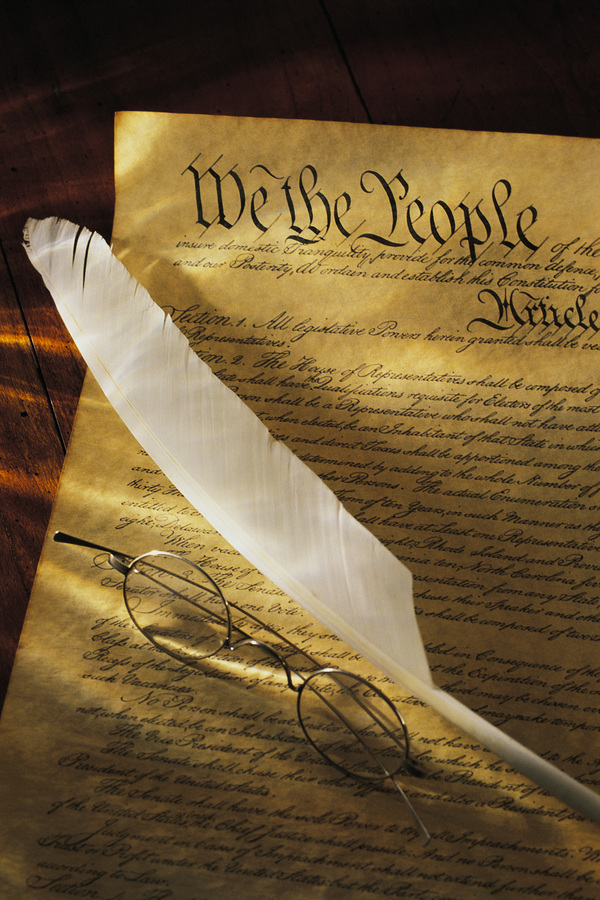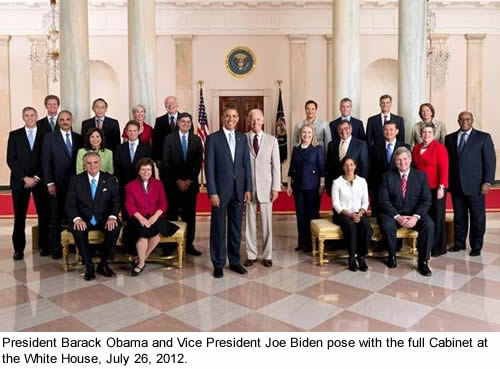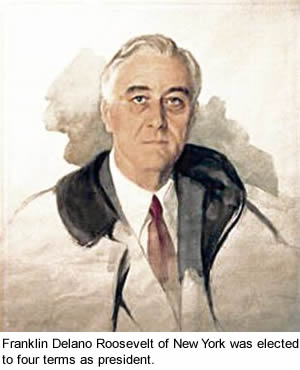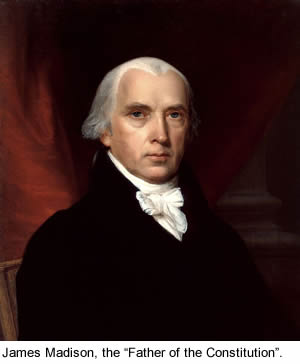Learn
To use the materials on the Discovery Education website, you will have to login. View the login instructions.
- The Amendment Process
- "Informal Amendment"
- "Informal Amendment 2"
- The Bill of Rights
- Amendments 11-27
- Review
A Timeless Document

The Constitution of the United States has stood the test of time. Think about all the technological, social, economic, and political changes that have occurred in our nation since the Constitution was originally written. There were no cars, planes, phones, computers, or even electricity in 1787. As the nation has changed over time, the government can adapt because the Founding Fathers made the Constitution flexible. This flexibility has allowed the document to remain relevant in modern society while holding the government to a framework that protects rule of law and limited government.
A change or correction of error in the Constitution is called an amendment and requires approval by three-fourths of the states. The Founding Fathers provided flexibility, but made it difficult to formally amend the Constitution. Despite the enormous changes in our society since the Constitution was ratified in 1788, it has been amendeded only twenty-seven times.
Amending the Constitution
Article V outlines the formal process for adding amendments to the Constitution. There is a two-step process for amending the Constitution. First, an amendment must be proposed or suggested. Second, the proposed amendment must be ratified or approved. Both steps require a supermajority.
Read Article V of the Constitution to learn more about the amendment process.
Step 1: Amendment Proposal
The are two ways to propose constitutional amendments:
- Congress has the power to propose amendments. The proposed amendment must receive the approval of at least two-thirds of the House and two-thirds of the Senate.
- Delegates at a national convention may propose amendments. At least two-thirds of the state legislatures must request Congress to call a national convention.
At this point in history, all amendments to the Constitution have been proposed by Congress.
Step 2: Amendment Ratification
Congress chooses one of two ways for states to ratify an amendment:
- State legislatures may vote on a proposed amendment. At least three-fourths of the states' legislatures must approve an amendment before it is added to the Constitution. The citizens may also be requested by the state legislature to vote on an amendment before the legislative vote.
- Conventions may be called in each state to consider a constitutional amendment. The representatives or delegates at the conventions are elected by citizens. At least three-fourths of the states' conventions must approve of the amendment for ratification to the Constitution.
Read "Ratifying the Constitution" to learn more about the ratification process.
"Informal" Amendment Process
Though the amendment process outlined in Article V of the Constitution is the only formal way the Constitution can be changed, our interpretation and application of the Constitution is constantly changing as a result of an informal amendment process, which is arguably the most important aspect of the of the document created by the Founding Fathers at the Constitutional Convention in 1787. It has allowed the document to grow and change as the country changed in ways the Founders could not possibly have foreseen. The flexibility of the document allows it to serve a nation that is able to use a wide range of technology for communication today despite the fact that the document was written with a quill pen on parchment paper.
There is no official informal amendment process outlined in the Constitution. Yet, the Framers provided the different branches of government with the flexibility to apply and interpret the Constitution in ways that allow it to change. The Constitution has been informally amended over time as a result of:
- legislation,
- executive action,
- court decisions,
- political party practice, and
- custom.
Watch The Constitution: A Living Document (1:40) to learn more about the informal amendment process.
The various informal processes by which the Constitution is changed are discussed below.
Legislation
The Constitution created a basic outline for the national government. Over time, Congress has passed legislation to define the details of needed additions to that basic framework. For example, Article III requires that there would be a Supreme Court and "such other courts as Congress deems necessary." Once the first Congress was elected, one of their first actions was to pass the Judiciary Act of 1789 which created the federal court system.
Executive Action
Through executive action, strong Presidents can expand the power of the government. George Washington decided he would use the heads of the newly created executive departments to serve as advisors. The group, known as the Cabinet, began to meet on a regular basis to advise the President. The Cabinet is a vital part of the national government today, despite the fact that it is not provided for in the Constitution.
Court Decisions
As the federal courts decide cases, they add to the meaning of the Constitution. The court case, Marbury v. Madison, 1803, is an example of the growth of the national government's power through judicial decisions. As a result of Marbury v. Madison, the Supreme Court ruled that the courts have the power to declare laws unconstitutional and judicial review became a basic constitutional principle.
Political Party Practices
The actions of political parties have added to the power of the national government. The Constitution makes no provision for nominating presidential candidates. Over time, political parties have developed methods for nominating presidential candidates. National nominating conventions, primaries and caucuses are all the result of party practice rather than constitutional provisions.
Custom
George Washington served two terms of office and then returned to private life. This precedent became customary over time. Other Presidents followed the custom set by Washington until Franklin Roosevelt was elected to a third term in 1940. The custom eventually became an official part of the Constitution in 1951 with the addition of the Twenty-second Amendment, which limited a president's time in office to two terms.
Image credit: Official White House Photo by Chuck Kennedy. 2012. Wikimedia Commons. [Image]. April 15, 2015
Bill of Rights
One of the stumbling blocks for ratification of the Constitution had been its lack of a bill of rights. Federalists had promised that adding a bill of rights to the Constution would be a top priority for the new Congress. In 1789, federalist James Madison made good on this promise by writing seventeen proposed amendments to the Constitution, all of which addressed specific rights and freedoms. By late 1791, ten of the amendments written by Madison had been passed by Congress and ratified by the states, making them the first amendments to the Constitution.
Watch The Bill of Rights: Guarantees of Rights and Freedoms (1:02) to learn more about it.
The first ten amendments to the Constitution are known collectively as the Bill of Rights. The Bill of Rights guaranteed certain individual rights and freedoms that were not specifically listed in the Constitution. Some of the rights and freedoms guaranteed by the Bill of Rights include: freedom of religion, freedom of speech, freedom of the press, the right to keep and bear arms, and the right to a trial by jury.
Explore Creating the Bill of Rights on the Library of Congress interactive website to learn more about it.
Watch Ratifying the Bill of Rights (3:09) to learn more about it.
Use the links below to read more in depth about the Bill of Rights amendments.Watch The Bill of Rights (1:45) to learn more.
Protection of Freedoms
Read First and Second Amendments.
Read Privacy and Property Rights.
Read Crime and Punishment.
Read and/or watch Should there be restrictions on free speech?.
Image credit: Vanderlyn, John. James Madison. 1816. The White House Historical Association collection. Wikimedia Commons. [Image]. April 15, 2015.
Amendments 11-27

Now that you have learned about the Bill of Rights, you are ready to examine the other amendments to the Constitution.
There are some amendments that stand out as being particularly important due to their significant impact on large groups of Americans, including former slaves and women.
Amendments Concerning Former Slaves
The Thirteenth Amendment (1865) freed all slaves by outlawing slavery or involuntary servitude.
The Fourteenth Amendment (1868) extended citizenship to blacks and prohibited states from denying the rights and privileges of citizenship to any person born or naturalized in the United States.
The Fifteenth Amendment (1870) provided that the right to vote shall not be denied on account of race, color, or previous servitude.
Suffrage Amendment
Neither African-Americans nor women were treated as equal citizens by the framers; however, our amendment process has allowed our Constitution to change to right the wrongs of our past. The Nineteenth Amendment (1920) gave women the right to vote by providing that the right of citizens to vote shall not be denied on account of sex.
Watch Suffrage (1:38) to learn more about the 19th Amendment.
Explore Amendments to the U.S. Constitution to read more information about Amendments 11-27.
If you are interested in learning even more about Amendments 11-27, watch the videos below.
- Amendments to the Constitution After the Bill of Rights (3:49)
- The 11th and 12th amendments (2:35)
- The 13th, 14th and 15th Amendments (5:14)
- The 16th, 17th, 18th, 19th Amendments (3:47)
- The 20th and 21st Amendments (2:38)
- The 22nd 23rd, and 24th Amendments (2:42)
- The 25th Amendment (3:48)
- The 26th and 27th Amendments (2:52)
Review of Supreme Law of the Land
Article VI declared the supremacy of the national government or the Constitution is the supreme law of the land.
Watch Amending the Constitution (1:22) to review the voting amendments.
Watch The Bill of Rights (4:20) to review the first ten amendments.






